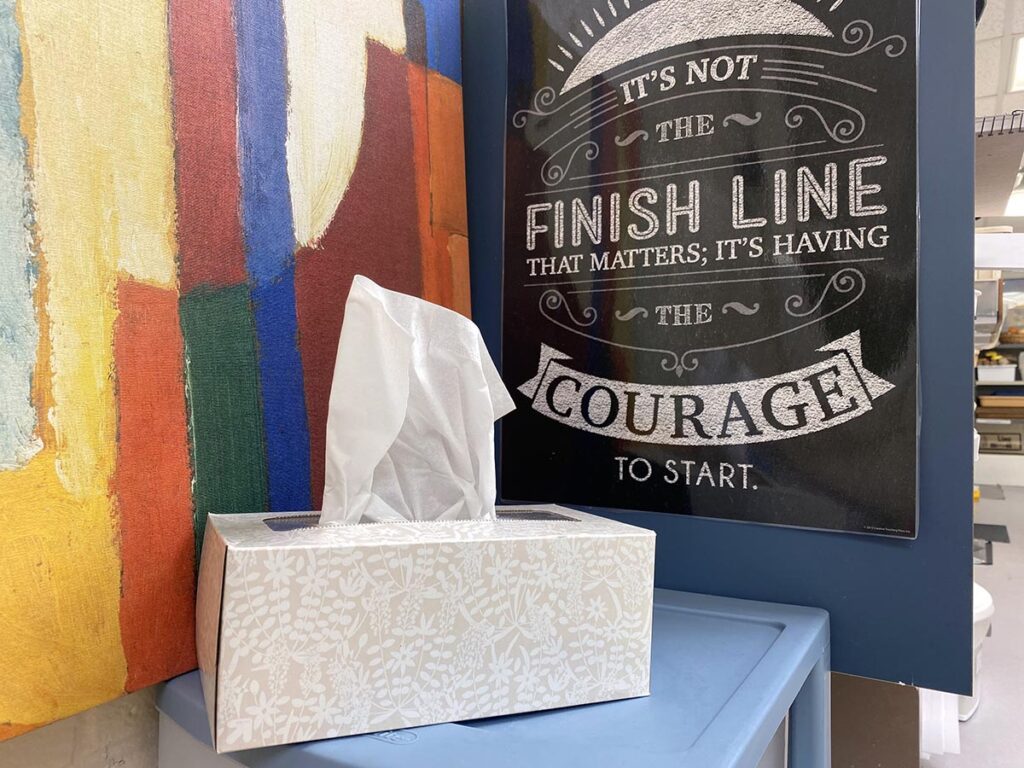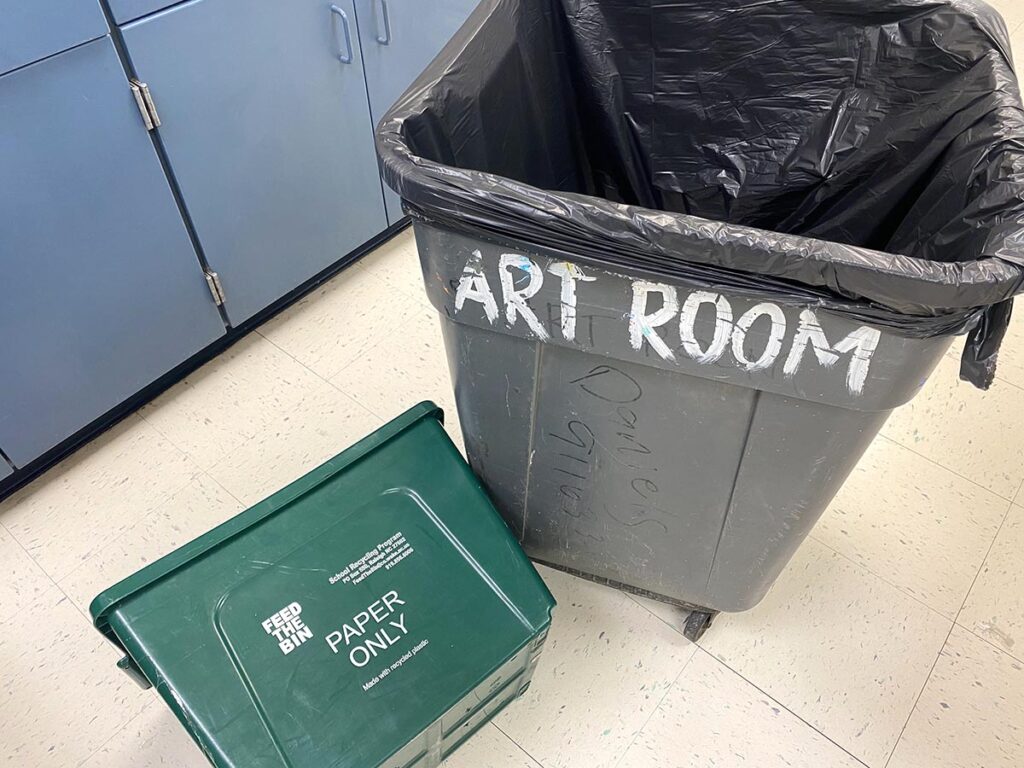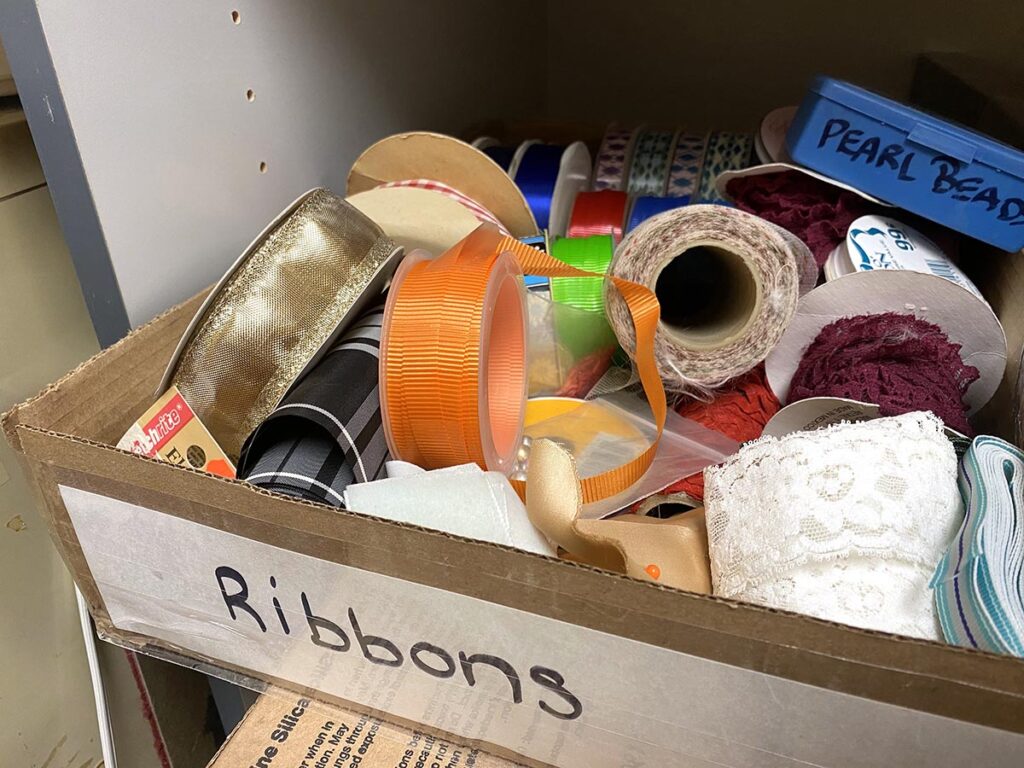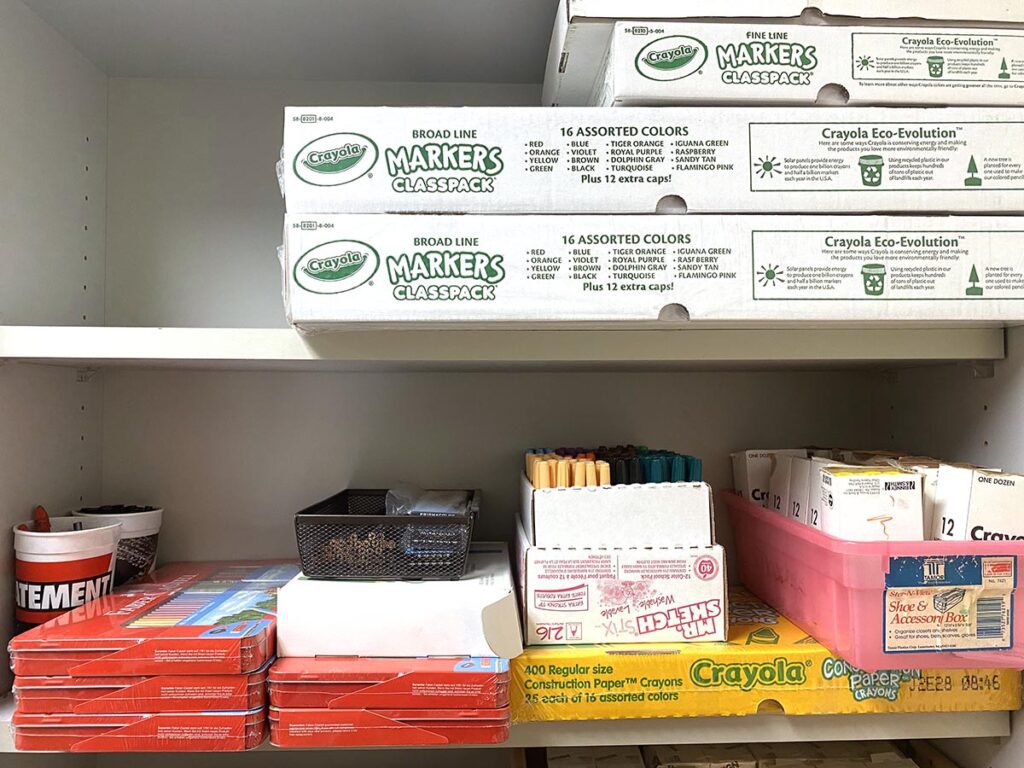Art teachers are the unsung heroes of the school, handling more roles than a one-person band in a parade. You’re not just artists—you’re supply gurus, decorator extraordinaires, and even social media wizards! From designing event posters to fixing a broken backpack, art teachers are the secret sauce that adds flavor to every school. Join us on a cheerful journey as we explore all of the humorous and heartwarming hats art teachers wear. We’ll even throw in some helpful tips for when the roles become one too many!
What art teacher roles have you taken on from the list below?

1. Emotional Support: Trusted Confidant with Office Hours
With a box of tissues ready by every door, art teachers often serve as more than just educators. Many students see you as a safe haven with a comforting shoulder to lean on when they’re navigating turbulent situations. Beyond teaching techniques, art teachers offer an outlet for emotional challenges through creative expression. Students often confide in you, however, taking on the emotions of your students can lead to feelings of overwhelmingness.
Boundary Tips:
One way to lessen the load is to assign student office hours. Post a sign on your door with dates and times you can take student visitors. Refer students to other resources like school counselors, administrators, mentors, family, and friends.
2. Club Organizer: Extracurricular Expert
Art teachers often find themselves unwittingly thrust into the role of club organizers—it’s almost as if administrators and parents have a secret pact to volunteer your time on their behalf. Suddenly, you’re the sponsor of the “Knitting Club,” “Anime Club,” and even “Yearbook.” Since art teachers also make the best coaches, you may have a sports team or two on your plate as well.
Boundary Tips:
Even though after-school art clubs can be rewarding, artfully create boundaries so you can give your best to your students during the official school day. Consider setting a clear schedule, like having a “Club of the Month,” to keep things manageable. Delegate to your students and have a few responsible budding leaders generate ideas, send communications, and rally the group! Remember, saying “no” to one club means saying “yes” to preserving your sanity and continuing to spread your artistic wisdom where it matters most.
3. Art Supply Guru: Master of Budget Creativity
Art teachers are the undisputed masters of managing materials for their classes. Whether it’s paintbrushes, sketchbooks, or sets of colored pencils, you’re an expert at making sure your students have everything they need for creative endeavors. Stretching budgets to make the most of every cent is just part of the game and art teachers are nothing short of resourceful. See for yourself in our Art Room Hacks YouTube series!
Boundary Tips:
Establish boundaries to keep your classroom from becoming an art store. Politely tell other teachers and students that supplies are for students in the art program and are needed to meet the curriculum’s objectives. If you have extra materials, designate a place for communal supplies. You can also provide a list of where other teachers can purchase common art materials.
4. Trash Recycler: Trash into Treasure Magician
How often have you pulled something from the dumpster or recycling bin? Art teachers possess a unique ability to see potential in the discarded and reimagine the ordinary as extraordinary. You often find yourself scavenging empty containers, trays, and other unusual items that may have artistic potential. You thrive on the challenge of figuring out how to breathe new life into old materials.
Boundary Tips:
Donations are wonderful but set boundaries with colleagues who donate items to your art classroom. Only keep what will fit into your limited space and fulfill specific projects. If you need new supplies, don’t hesitate to ask your school administrators instead of constantly rummaging through the recycling bin. Download a template letter and other fabulous resources in this article. Strike a balance to ensure your classroom remains a haven for creativity and sanity.

5. Poster Picasso: School Decorator Extraordinaire
“We immediately thought of you when this came up!” “We have a great idea for you!” “I have a question you can help with.” These are all conversation starters art teachers have heard before. We are often the designated “Poster Picassos,” responsible for creating eye-catching designs for all school activities. We lend our artistic touch to promote bake sales, pep rallies, and everything in between. Additionally, we usually wear the hat of the “School Decorator” because we can spruce up any bulletin board and help teachers transform their classrooms.
Boundary Tips:
Send a staff email at the beginning of the year saying you’d love to help but require a certain amount of notice ahead of time. Set limits on the number of posters or bulletin boards you can manage to ensure your work remains high-quality. Guide colleagues on their own projects and empower them to take the creative reins.
6. Social Media Director: Amplifier of Artistic Voices
Art teachers often take on the role of the school’s social media advocate. You know how to showcase your students’ talents and promote upcoming events through colorful visuals, strong photos, and captivating captions.
Boundary Tips:
To ensure organized posts, create a posting schedule for each class or grade. Utilize AI to help generate post content and hashtags to save time and effort. Set a five-minute timer for yourself to edit, write, and share each post. Additionally, use a platform to link multiple social media accounts in one place so you only have to click once to post!
7. Costume and Set Designer: Behind-the-Scenes Theater Support
Art teachers often don the hats of both costume and set designers for school plays or performances. We understand atmospheric perspective and can create captivating stage sets. We use our creative problem-solving to make enchanting costumes. From crafting fairy tale gowns to building fantastical backdrops, art teachers are the creative architects behind the school’s theatrical productions.
Boundary Tips:
Consider tying the set design to an existing unit so students can complete it during class. For example, if you are creating backdrops for the Black History Month Assembly, have your students paint city stoops in the style of Jacob Lawrence as they explore Harlem Renaissance art. Additionally, you can advocate for a stipend to compensate for afterschool hours.

8. Crafty Custodian: Keeper of Cleaning Hacks
Art teachers often find themselves moonlighting as custodians. Beyond your artistic endeavors, you manage cleaning duties in your classroom and maintain order amidst the glue spills and clay dust. You know precisely where to find the elusive rolls of “good” paper towels. You know every trick to remove permanent markers from whiteboards and paint splatters from walls.
Boundary Tips:
While keeping your classroom clean is important, you do not have to obsess over a spotless space. Collaborate with your school’s custodial staff to share responsibilities. Create a cleaning schedule that allows you to focus on one zone at a time. Assign cleanup jobs to students to build ownership and free up your planning period.
9. Tailor: Fast Fashion Fixer
Art teachers often assume the role of a tailor and handle an array of wardrobe malfunctions during the school day. From sewing on buttons to fixing a backpack zipper, you possess an uncanny ability to salvage clothing crises. Moreover, art teachers are true masters of the “four magical tools:” glue, safety pins, staples, and tape, all of which help perform wardrobe wonders.
Boundary Tips:
While you thrive in these unexpected roles, strike a balance to avoid becoming the school’s permanent on-call seamstress. Offer your fashion-fixing abilities during your designated office hours on a first-come, first-serve basis. Compile a playlist of short sewing tutorials for students to make their own alterations. You can also simply say, “I’m so sorry but I don’t have enough time to help right now!”

Why boundaries?
Remember, boundaries are your artistic tool to craft a thriving teaching career while safeguarding your mental, emotional, and physical health. For more resources on why boundaries are important and how to set them, check out the following:
- 10 Supportive Ways for the Art Teacher to Cope with Burnout
- Curbing Burnout Pack in PRO Learning
- 7 Tips to Help You Set Boundaries in the Art Room with Confidence
- Reduce Art Room Stress by Taking These 8 Things off Your Plate
As we wrap up our journey through some of the many wacky roles of art teachers, it’s important to remember one thing—boundaries! Just like framing a masterpiece, art teachers need to set boundaries to protect their sanity and showcase how valuable their skills and time are. Find the sweet spot between work and play and the balance between clear expectations and helping others. In doing so, you will be the best art teacher you can be to pour into your students and your own artmaking, as well as lead a fulfilling life outside of the art room!
What is another unusual role you hold as an art teacher?
Share a boundary that has helped you be a better art teacher!
Magazine articles and podcasts are opinions of professional education contributors and do not necessarily represent the position of the Art of Education University (AOEU) or its academic offerings. Contributors use terms in the way they are most often talked about in the scope of their educational experiences.





